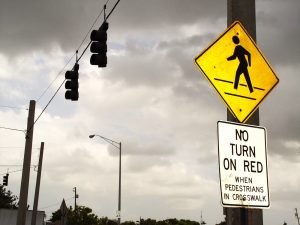With the time change, comes later light. While this is a welcome change for many, including tourist destinations, restaurants and other local businesses trying to recover from COVID-19 restrictions, it also makes for dark mornings, especially over the next month as Southwest Florida days lengthen toward summer.
Numerous studies have been done on many aspects of Day light Savings Time, with mixed results. Until the 1800s, cities set their clocks by the sun. While this could result in minor differences, it worked for everyone until the trains needed to run on time. By the start of the 1900s, time zones had been established but it was not until World War 1 that Daylight Savings Time became standard in the United States.
light Savings Time, with mixed results. Until the 1800s, cities set their clocks by the sun. While this could result in minor differences, it worked for everyone until the trains needed to run on time. By the start of the 1900s, time zones had been established but it was not until World War 1 that Daylight Savings Time became standard in the United States.
Moving the clocks ahead an hour in the spring and back in the fall was believed to save energy consumption by providing more evening light. Several studies have found that is not the case, largely because people remain active later into the evening, visiting shops, restaurants and other destination locations.
The impact on road safety has been similarly impacted. It’s lighter later, but more people are out, which increases the risks of accidents.
Pedestrian Safety Awareness – Driver’s Responsibilities
Further darkening potential benefits is the fact that it is darker earlier, when many school-aged children are making their way to bus stops and school buildings. Until days get longer, motorists will have to deal with lower visibility and may even have to combat drowsiness.
This also coincides with the height of spring break and the winter tourism season in Southwest Florida; a time when pedestrians are always out in force. Our pedestrian injury attorneys urge all motorists to remain vigilant for walkers, whether in the morning or after work, when the number of pedestrians will reach seasonal highs over the coming weeks.
While it remains to be seen what impact COVID-19 will have, early evidence suggests robust crowds. Drivers may be less used to the risks because ongoing restrictions have left many areas nearly deserted for much of the last year.
Here are a few tips for avoiding an accident:
Intersections: These are the top locations for accidents between walkers and drivers. Understand walkers will usually be determined to have the right of way. Striking a pedestrian, even at low speed, will typically result in serious or fatal injuries.
Schools: Pay particular attention near schools and bus stops. Note waiting children along your commute and understand that many of these bus stop locations are not well marked. Pay particular attention in theses areas or near school buildings.
Crosswalks: Walkers will most always be determined to have right of way and drivers should stop and allow them to cross.
Obstructions: Parked cars and other obstructions can hide your view of walkers. Make a habit of scanning ahead and making a mental note of oncoming walkers or bicycle riders.
Speeding: Particularly in neighborhoods, driver speed can have a major impact on stopping distance, reaction time and force of collision. Always obey the speed limits.
By making an extra effort to watch for walkers this spring, you can do your part to help keep these vulnerable road users safe, while reducing the risks you will be found responsible for causing a tragedy.
If you or a loved one is injured, call Associates and Bruce L. Scheiner, Attorneys for the Injured, at 1-800-646-1210.
 Florida Injury Lawyer Blog
Florida Injury Lawyer Blog





